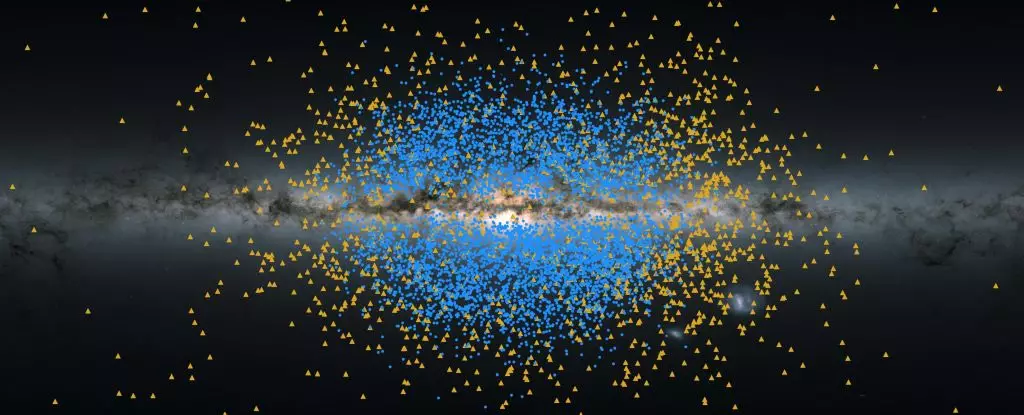Recent discoveries within the Milky Way galaxy have shed light on relics dating back billions of years, offering a glimpse into the galaxy’s birth. Astounding findings from the European Space Agency’s Gaia telescope have uncovered two streams of stars, aptly named Shiva and Shakti, circulating near the heart of the Milky Way. These streams are believed to be nearly as old as the Universe itself, originating during a time when the Milky Way was still in its infancy, extending its first tendrils of stars into the cosmos.
Galactic archaeology, a field dedicated to piecing together the history of the Milky Way, relies heavily on identifying ancient populations of stars. The advanced capabilities of the Gaia telescope have facilitated this process by providing precise data on the positions, velocities, and metallicity of stars within the galaxy. Metallicity, referring to the metallic elements present in a star’s composition, serves as a crucial indicator of a star’s age. Stars with higher metal content are generally younger, while those with lower metallicity are considered older and likely to have originated during the galaxy’s early days.
Stellar streams within the Milky Way offer valuable insights into the galaxy’s past. Some streams can be traced back to disrupted star clusters, while others are remnants of galaxies that were devoured and torn apart by the Milky Way’s gravitational pull. The identification of Shiva and Shakti by astronomers Khyati Malhan and Hans Walter-Rix involved analyzing regions near the galaxy’s core in 2022, unveiling a population of ancient, metal-poor stars. These two distinct streams, each approximately 12 to 13 billion years old, provide significant clues about the galaxy’s formation.
Shiva and Shakti, with a combined mass equal to 10 million Suns, exhibit unique orbital characteristics within the Milky Way. Shiva, positioned closer to the galactic center, follows elliptical orbits, while Shakti, situated further out, traces circular paths around the center. The researchers suggest that these streams likely formed as individual structures that merged with the Milky Way during its early stages of development, contributing to its growth. The intricate structures of Shiva and Shakti offer a deeper understanding of how the galaxy evolved over time.
The Gaia telescope’s mission to unveil the Milky Way’s origins has been immensely successful, providing astronomers with unprecedented data to study the galaxy’s infancy. By pinpointing subtle differences between stars and analyzing their movements, Gaia has revolutionized our understanding of how the Milky Way formed and evolved. Project scientist Timo Prusti of the European Space Agency emphasizes the critical importance of precise data in unraveling the mysteries of our galaxy, acknowledging Gaia’s instrumental role in this groundbreaking exploration.


Leave a Reply